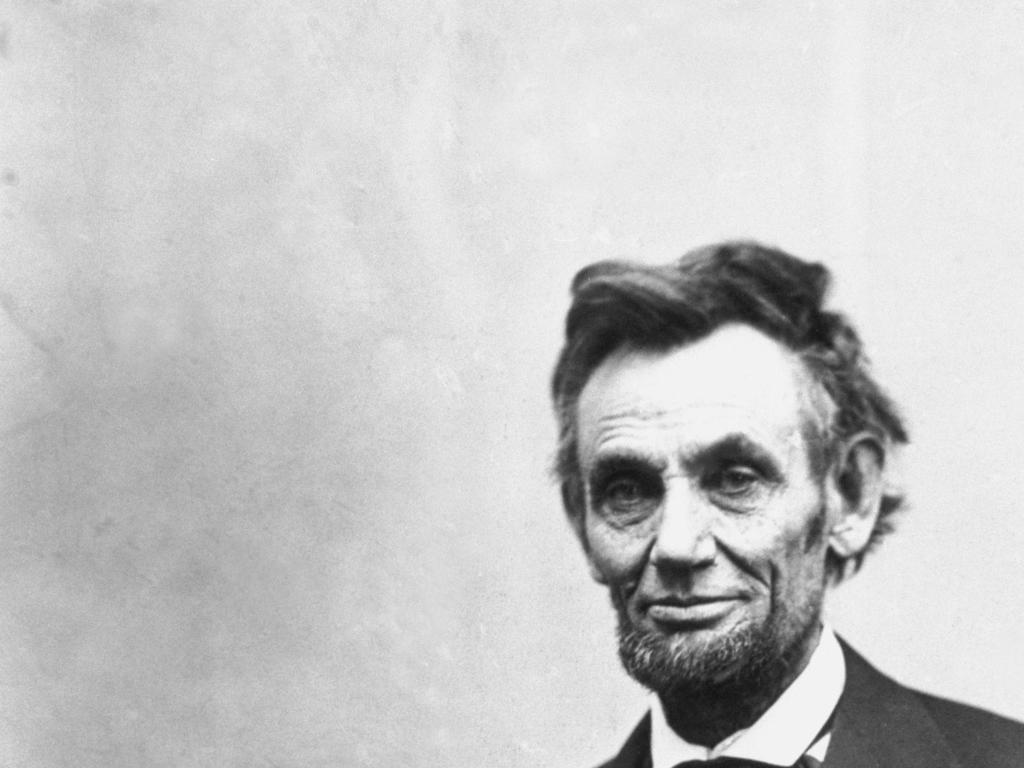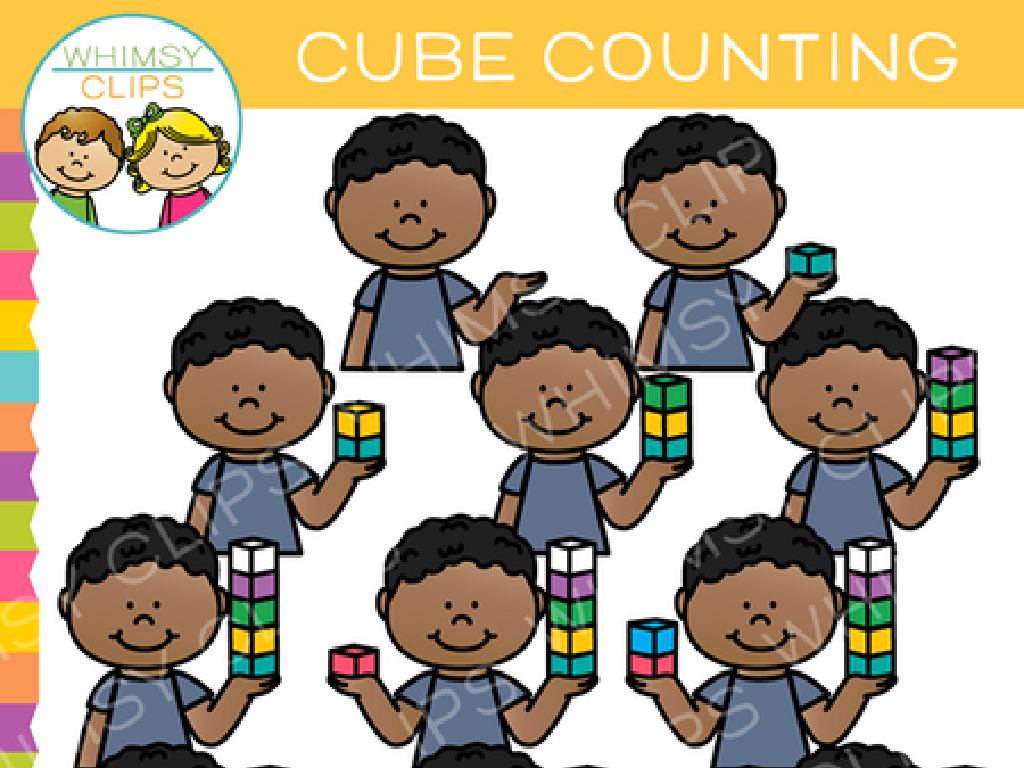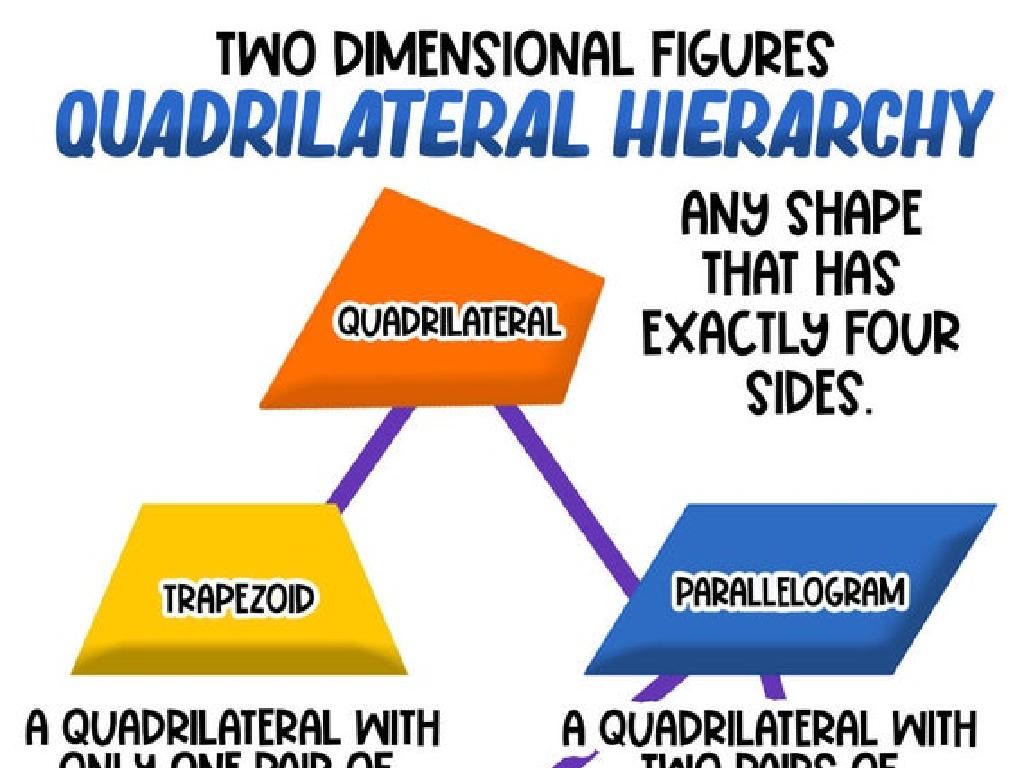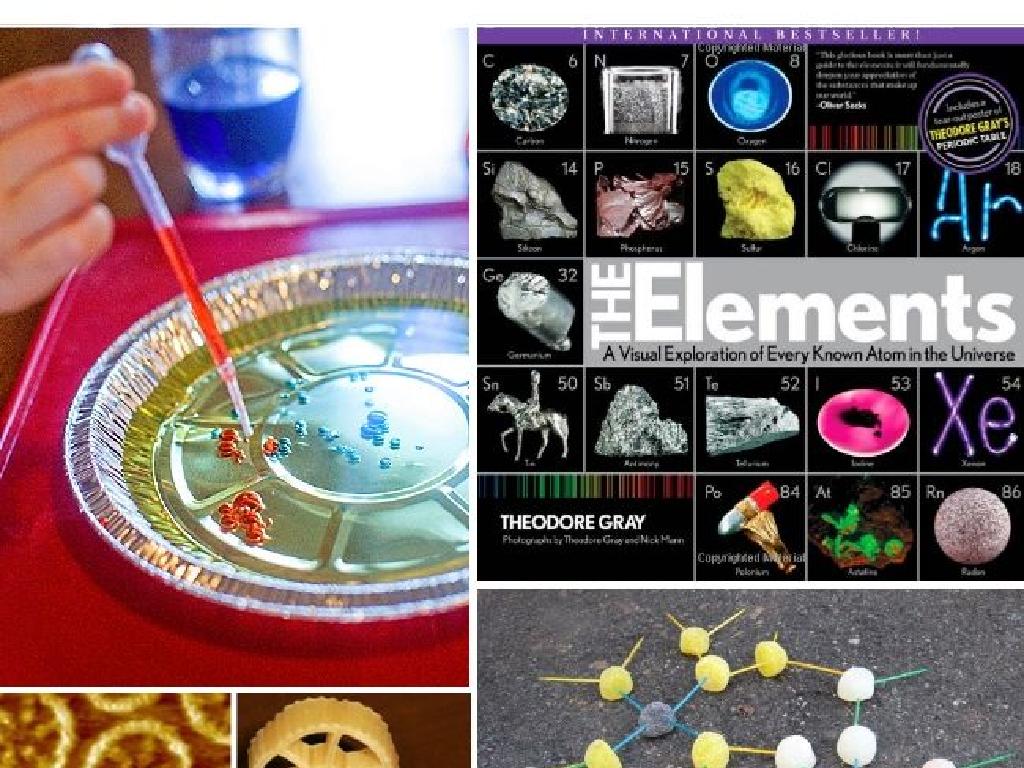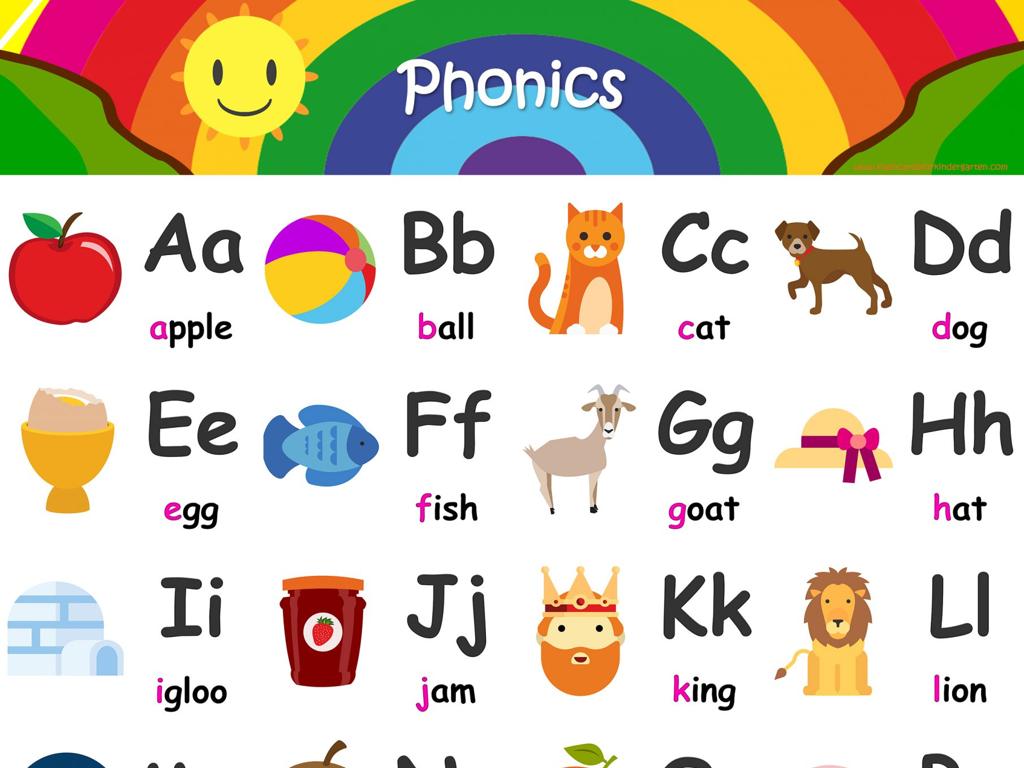Choose Customary Units Of Mass
Subject: Science
Grade: Fifth grade
Topic: Units And Measurement
Please LOG IN to download the presentation. Access is available to registered users only.
View More Content
Understanding Customary Units of Mass
– Why do we measure?
– To compare, describe, or understand objects.
– What is mass?
– Mass is how much matter is in an object.
– Customary units of mass
– Common units: ounces, pounds, and tons.
– Today’s lesson overview
|
This slide introduces the concept of measurement and its significance in everyday life. Emphasize the importance of measuring to provide a way to compare, describe, and understand objects around us. Introduce mass as a measure of the amount of matter in an object, which is different from weight. Explain that in the U.S., we commonly use ounces, pounds, and tons to measure mass. Today’s lesson will focus on understanding these customary units of mass and when to use them. Encourage students to think of examples where they have encountered these units in real life, such as weighing themselves or purchasing fruits at the grocery store.
Understanding Mass
– Define mass
– Mass is the amount of matter in an object.
– Mass vs. weight
– Mass is constant; weight can change with gravity.
– Everyday examples of mass
– Fruits, animals, and books all have mass.
– Measuring mass in units
– We use ounces (oz), pounds (lb), and tons to measure mass.
|
This slide introduces the concept of mass, a fundamental property of matter. It’s crucial to differentiate between mass and weight, as mass remains the same regardless of location, while weight can change due to gravity. Provide relatable examples of mass by discussing common objects that students interact with daily. Emphasize the customary units of mass such as ounces, pounds, and tons, which are used in the United States. Encourage students to think of items they could weigh and what units they would use. This will help them grasp the concept of mass and its measurement in a practical context.
Understanding Customary Units of Mass
– Learn about ounces, pounds, tons
– Smallest to largest: oz, lb, t
– Match objects with their mass
– A pencil is about 1 oz, a textbook is about 1 lb
– Know when to use oz, lb, or t
– Use oz for light items, lb for heavier, t for very heavy objects
– Practice with real-life examples
|
This slide introduces students to the customary units of mass commonly used in the United States. Start by explaining ounces, pounds, and tons, and how they relate to each other (16 ounces in a pound, 2000 pounds in a ton). Show everyday objects to help students visualize the mass of items in these units. Discuss appropriate situations for using each unit: ounces for small items like a slice of bread, pounds for something heavier like a bag of sugar, and tons for very large items like cars. Encourage students to bring examples from home for a hands-on activity to estimate and then measure the mass of items, fostering a practical understanding of these units.
Converting Units of Mass
– Convert ounces, pounds, tons
– Learn how to switch between oz, lb, and tons.
– Use a conversion chart
– A chart helps us see how many of one equals the other.
– Solve practice problems
– Apply what we’ve learned to real examples.
– Understand mass conversions
|
This slide is aimed at teaching students how to convert between different units of mass such as ounces, pounds, and tons. Start by explaining that these are customary units used to measure weight in the United States. Introduce a conversion chart that shows how many ounces are in a pound and how many pounds are in a ton. Work through practice problems as a class to apply this knowledge, ensuring to demonstrate both simple and complex conversions. Encourage students to ask questions if they’re unsure and remind them that practice is key to understanding mass conversions. Provide additional problems for homework to reinforce the lesson.
Estimating Mass: A Handy Skill
– Learn to estimate object mass
– Use familiar objects to gauge weight
– Understand estimation benefits
– Estimation saves time and aids in planning
– Class activity: Guess classroom item mass
– Each student guesses the mass of items like books, pencils, etc.
– Discuss estimation experiences
|
This slide introduces the concept of estimating mass, an important skill in science and daily life. Start by discussing why estimation is a useful skill, such as making quick decisions or planning without precise tools. For the class activity, have a variety of common classroom items ready for students to estimate their mass. Encourage them to use their prior knowledge and compare with known weights. After the activity, facilitate a discussion on their estimation process and how close their guesses were to the actual mass. This will help them understand the practical application of estimation and improve their ability to make educated guesses in the future.
Measuring Mass with Scales
– Learn to measure mass using a scale
– Observe a balance scale demonstration
– Watch how different weights make the scale tip
– Engage in a hands-on mass measuring activity
– Use a scale to find the mass of classroom objects
– Record the mass of various items
– Write down the measurements in your notebook
|
This slide introduces students to the concept of measuring mass, an essential skill in science. Start by explaining how a scale works and the importance of measuring mass in customary units (ounces, pounds). Demonstrate using a balance scale, showing how different weights affect the balance. For the hands-on activity, provide various items for students to measure and record the mass. Ensure they understand how to read the scale correctly and write down their observations accurately. This activity will help solidify their understanding of mass and how to measure it using the appropriate tools and units.
Real-world Applications of Mass Measurement
– Mass in cooking
– Recipes require precise mass for ingredients
– Mass in shopping and shipping
– Weighing produce, calculating postage costs
– Choosing correct mass units
– Using ounces, pounds, or tons appropriately
– Occupations using mass daily
– Chefs, pharmacists, shipping clerks
|
This slide aims to show students how mass measurements are integral to everyday activities and certain professions. In cooking, accurate mass measurements ensure recipes turn out as intended. When shopping, especially for produce, or when shipping items, understanding mass is crucial for cost estimation. Emphasize the importance of selecting the appropriate unit of mass (ounces for small items, pounds for personal items, and tons for heavy objects) to ensure accuracy and efficiency. Highlight how professionals like chefs, pharmacists, and shipping clerks rely on mass measurements in their daily work. Encourage students to think of other examples where mass is important and discuss why using the correct unit of mass matters in those scenarios.
Class Activity: Mass Scavenger Hunt
– Understand mass measurement
– Find items with specific masses
– Look for items like a pencil, eraser, or book and guess their mass
– Work together in teams
– Team up with classmates, discuss and compare findings
– Complete the scavenger hunt
– Find all items on your list to finish the hunt
|
This activity is designed to help students apply their knowledge of customary units of mass in a practical and engaging way. Divide the class into small teams and provide each team with a list of items to find, each with an estimated mass (e.g., something that weighs approximately an ounce, a pound, etc.). Students should use their judgment and knowledge of mass to find items that match the descriptions. Encourage them to use scales if available to check their guesses. This activity promotes teamwork, critical thinking, and the application of measurement skills. Possible items for the scavenger hunt could include a paperclip, a textbook, a backpack, or a water bottle. Ensure safety during the activity and that students understand they should only handle items with permission.
Review: Customary Units of Mass
– Recap key points of mass units
– Remember: ounces, pounds, and tons
– Open floor for student questions
– Connect today’s lesson to future topics
– Understanding mass is key in sciences like Physics
– Encourage curiosity and application
– Think about how we use mass in everyday life and in learning
|
This slide aims to consolidate the students’ understanding of customary units of mass such as ounces, pounds, and tons. It’s an opportunity to clarify any doubts and answer questions, ensuring a solid grasp of the concepts. Highlight the relevance of these units in real-world scenarios and future scientific studies, particularly in Physics. Encourage students to think critically about how mass measurements apply to their daily lives and to remain curious about the applications of what they’ve learned in other subjects.
Homework: Exploring Mass Measurement
– Practice measuring and converting mass
– Estimate the mass of common items
– Use familiar objects like fruits or books to guess their mass
– Find and record mass measurements at home
– Look at food packages, weigh items on a scale if available
– Reflect on the activity with a short paragraph
– Share what you learned about mass and its presence in daily life
|
This homework assignment is designed to reinforce the concepts of mass measurement in a practical, hands-on way. Students should practice converting between different units of mass (e.g., grams to kilograms). Encourage them to estimate the mass of items before actually measuring them to develop a sense of what different masses feel like. At home, they can look for items that have their mass labeled, such as food packages, or use a household scale. After completing the activity, students should write a short paragraph reflecting on their experience, what surprised them, and how this skill might be useful in real life. This will help them connect classroom learning to the real world.

